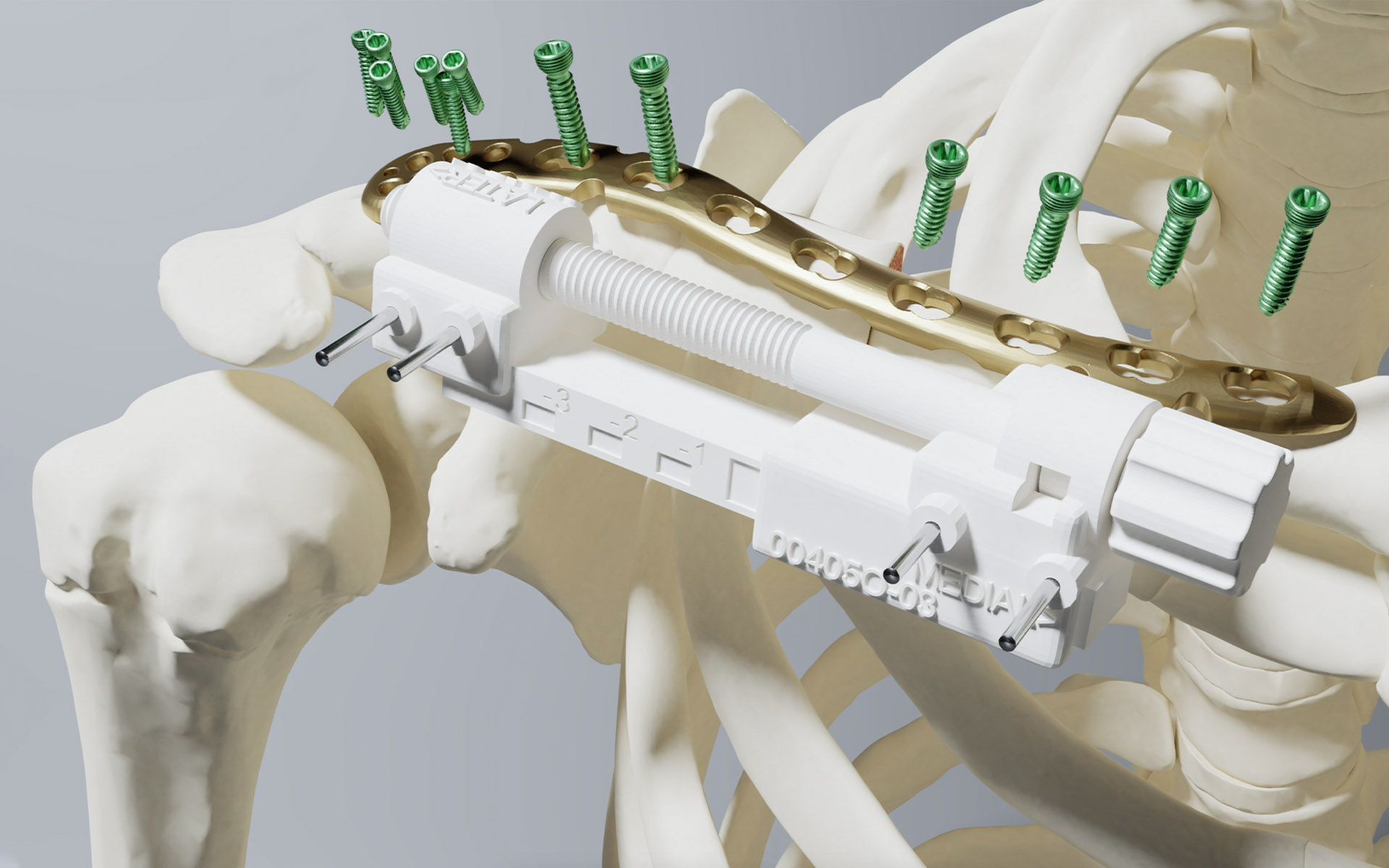High precision computer-assisted surgical planning
The center for 3D preoperative planning and 3D printing consists of an interdisciplinary team of researchers, engineers, and surgeons full of ambition. Their goal is to improve the treatment of musculoskeletal diseases by the use of computer technology.
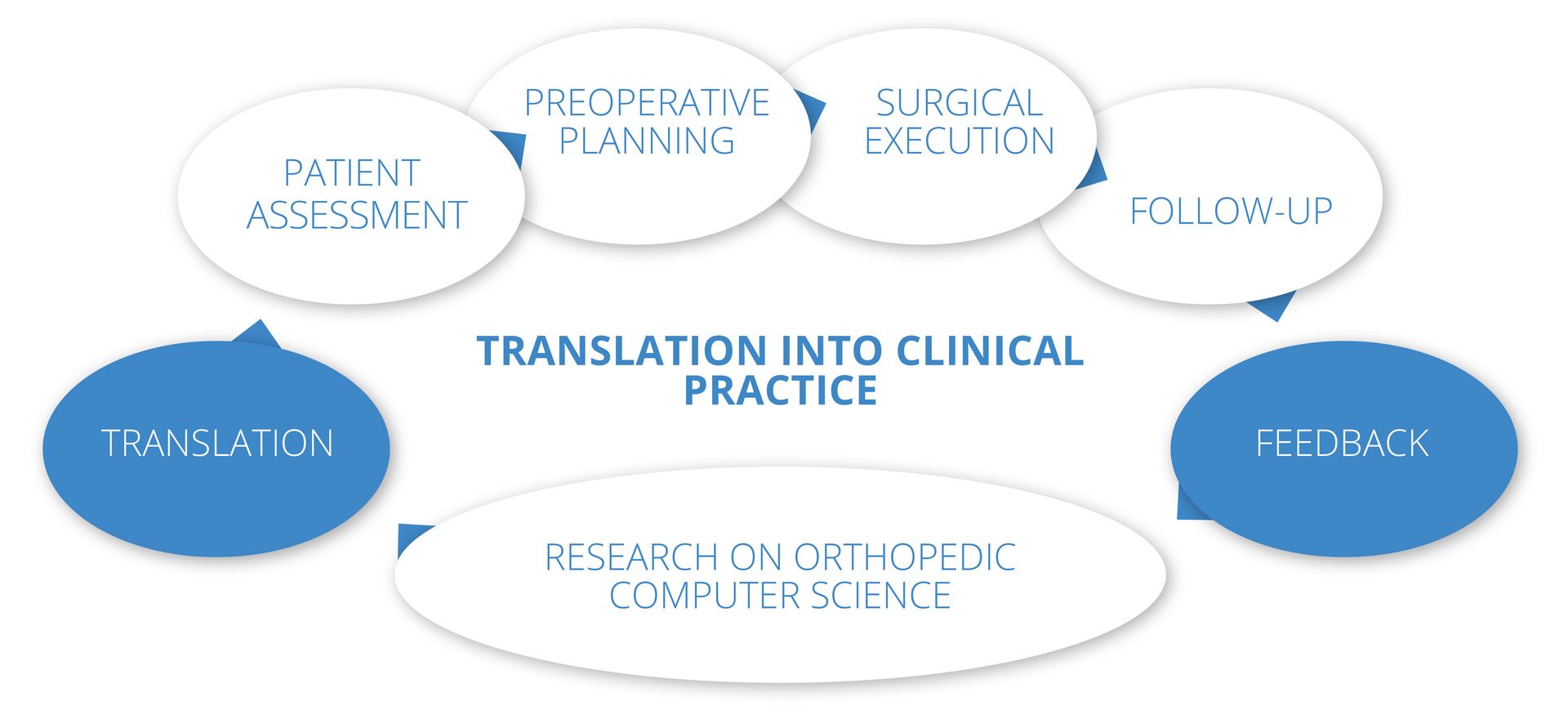
Many of the computer methods developed are already in clinical use – patients at Balgrist University Hospital benefit directly from these advances. We take a holistic approach with the aim of optimising every step of orthopaedic treatment – from the initial diagnosis to surgery and follow-up care.
Diagnosis and follow-up
Computer-assisted diagnosis provides the surgeon with a wide range of possibilities for determining optimal treatment. Computer-assisted follow-up allows an objective quantitative assessment of treatment success.
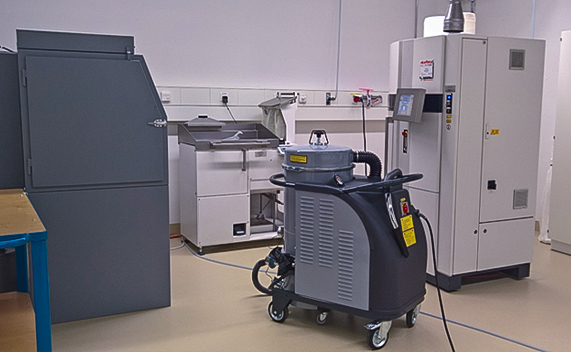
The 3D print infrastructure at Balgrist campus comprises several professional 3D printers that can be used in many ways. Some materials can be sterilised and their use in the operating theatre is permitted.
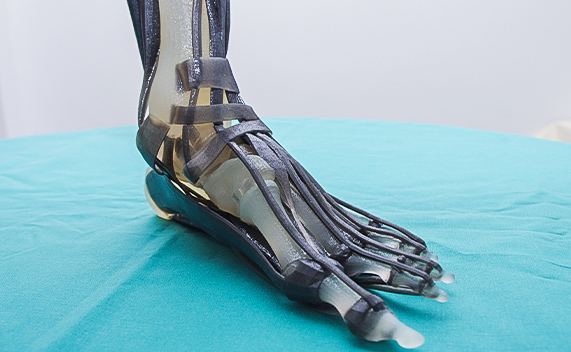
Sophisticated 3D print systems allow the patient’s anatomy, including details of tendons and ligaments, to be printed life-size. This enables patients to get a comprehensive picture of their condition. The surgeon can optimally plan and prepare for the operation.
Kinematic models provide additional information to improve the diagnosis of pathological conditions with dynamic causes, such as restricted mobility.
Kinematic models provide additional information to improve the diagnosis of pathological conditions with dynamic causes, such as restricted mobility.

Engineers and surgeons work hand in hand to analyse the therapeutic options.
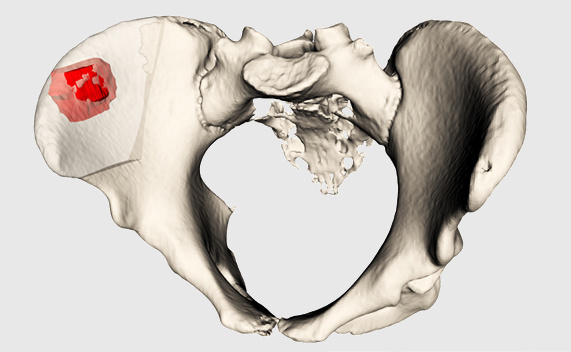
With the combination of imaging procedures and computer algorithms, it is possible to measure tumours in 3D with millimetre precision.
Surgical planning
Surgical planning allows a detailed simulation prior to the operation, tailor-made for the patient and the particular surgical condition.
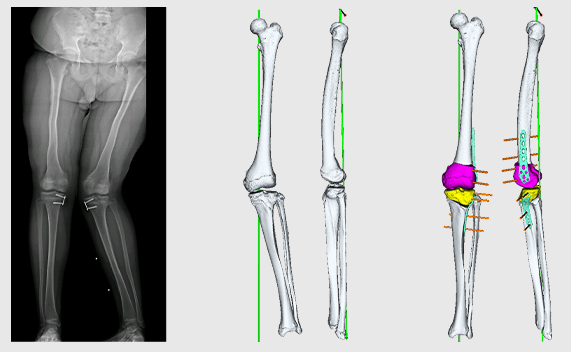
With 3D planning, complex orthopaedic corrective procedures can be simulated on the computer step by step. In the case of complex deformities of the leg, calculation of the necessary correction in the thigh and lower leg before surgery restores a straight leg axis.
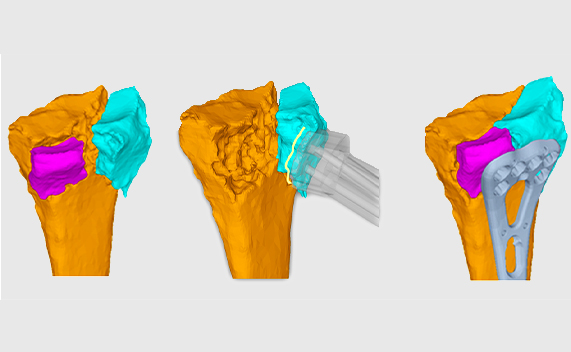
The computer identifies the bone fragments in a fracture (left) and fits them together like a jigsaw puzzle, so that the bone can be restored to its original shape.
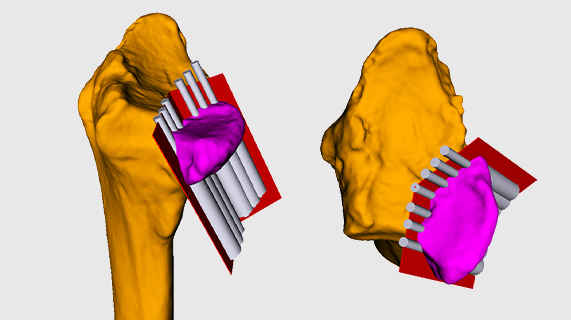
The technology is so precise that the removal of even the smallest irregularity of an articular surface can be implemented through 3D planning.
The method for computer-assisted treatment in corrective osteotomies developed by the center is now being used in many countries.

Spine surgery demands the greatest precision, which can be ensured with 3D planning.
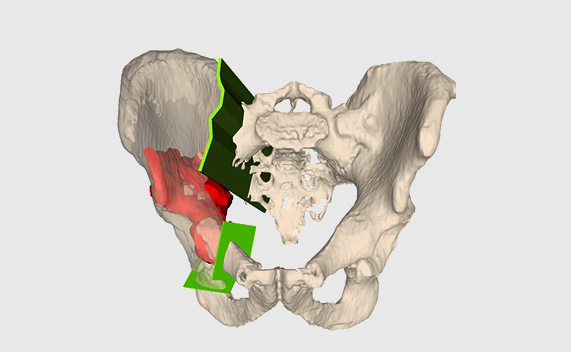
Operations on bone tumours can be simulated on the computer beforehand, thus achieving a high degree of surgical precision and safe implementation.
Operations
Navigation achieves high precision in controlled safe surgery.
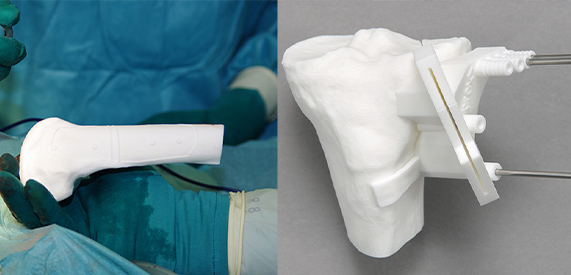
3D printer technology assists the surgeon in treating difficult cases. Patient-specific navigation aids from the 3D printer make it possible to operate with millimetre precision.
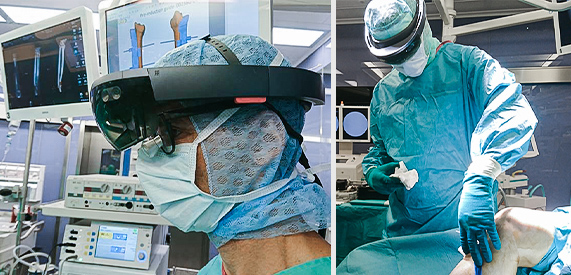
Technologies with a promising future, such as augmented reality, are already available to the Balgrist surgeons in the operating theatre (clinical studies).
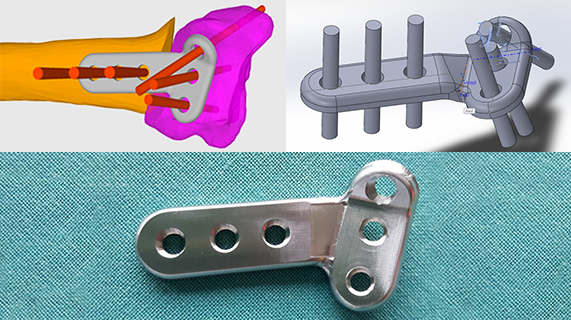
Implants with an exact fit tailored to the needs of the individual patient are already being used in the University Hospital with the center's help.
Patient-specific surgical tools, purpose-made for the individual, allow precisely controlled surgery in difficult operations.
Contact
We look forward to hearing from you.

Bastian Sigrist
Head of the Center for 3D preoperative planning and 3D printing
Email
Publications
The scientific work of the center is extremely well documented in more than 50 publications.

